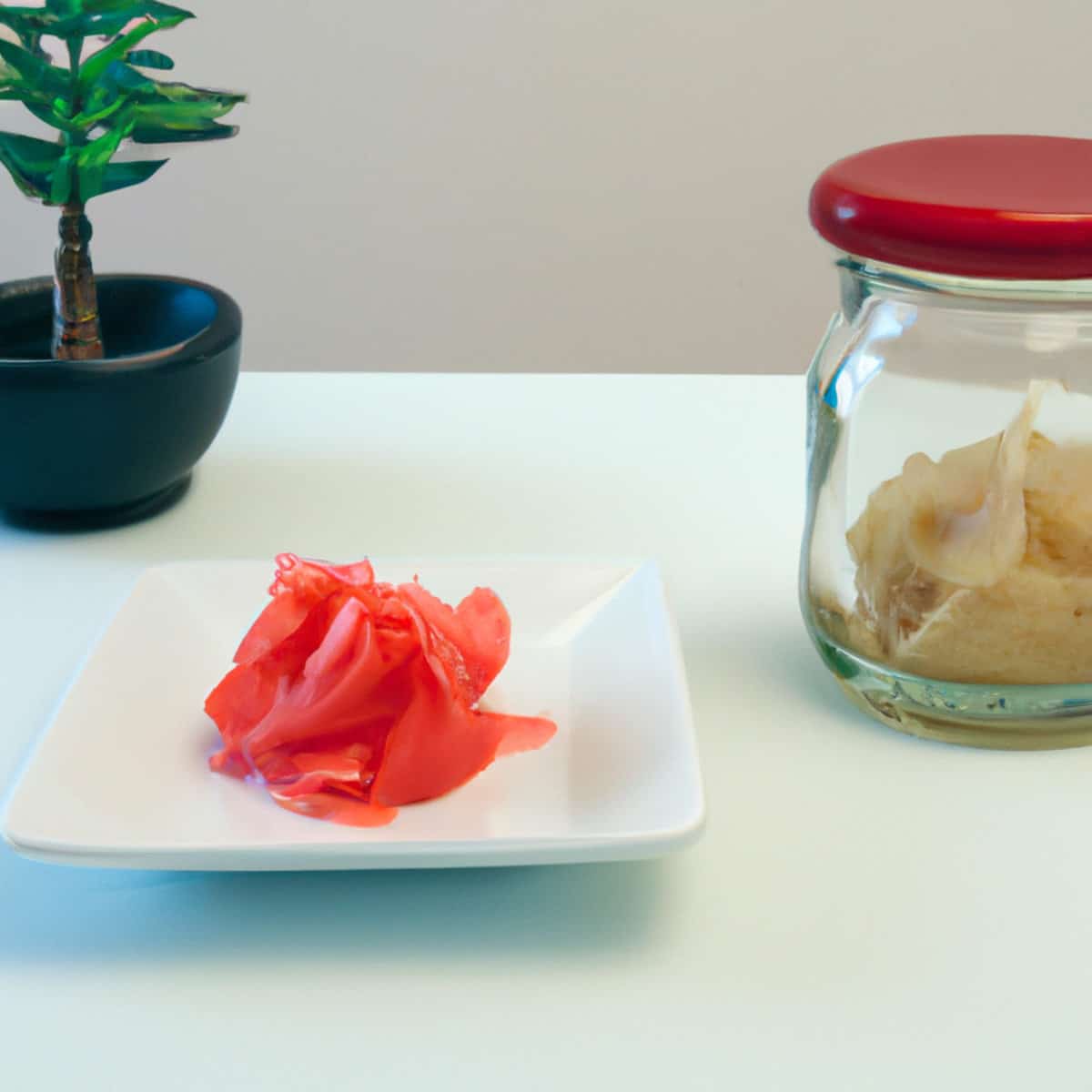Beni Shoga vs Gari: Two Different Pickled Gingers From Japan
Are you confused about the difference between beni shoga and gari? Both are made with ginger and accompany many of our favorite Japanese dishes, so it’s normal to mistake one for the other.
Beni shoga is a pickled ginger made with ume vinegar, sugar, and salt, with a dominant sour flavor with hints of sweetness. On the other hand, gari is made with rice vinegar and is much sweeter.
In this article, I’ll explore both condiments and compare them from every angle so that you’ll never pick up the wrong one by mistake again.


Check out our new cookbook
Bitemybun's family recipes with complete meal planner and recipe guide.
Try it out for free with Kindle Unlimited:
Read for freeIn this post we'll cover:
What’s the difference between beni shoga and gari?
To differentiate both the pickled condiments (called tsukemono in Japan) from each other profoundly, let’s break down the comparison in points:
Ingredients
So, beni shoga and gari are both made with young ginger. That, we do know. But that’s the only similarity, other than the use of salt and sugar.
Looking closely, we see that beni shoga is made with ume vinegar, which is a by-product of umeboshi when pickled with salt.
Another essential ingredient is red shiso (perilla leaves), which, although used as a colorant, also infuses some grassy, licorice-like taste to the vinegar, and then to the ginger.
On the other hand, gari is made with rice vinegar, which is obtained by fermenting rice.
The slight difference in terms of pickling liquid results into two totally different flavors, leading to the next point.
Taste
Beni shoga generally has a sour taste with mixed hints of sweet-spicy and herby flavors. Gari lies more on the sweeter side of the flavor scale, with mild tart, herby notes sometimes.
While the same type of ginger is used in both condiments, the taste factor is primarily controlled by the pickling liquid it is kept in.
For example, ume vinegar is super sour and salty. When the ginger is dehydrated with salt, it loses its flavor.
Now when it is stored in ume vinegar, the ginger reabsorbs the liquid and attains its taste.
This, when mixed with the leftover natural taste of the ginger, gives us a sour, mildly spicy, and somewhat sweet flavor due to the added sugar.
‘Complex’ would be the right word to define it.
The same is true for gari since the preparation method consists of ginger dehydration and then storing in rice vinegar and sugar solution.
However the result in that case is zesty-sweet rather than overly sour.
Color
“Beni shoga” literally means red ginger. Hence, when you ever see a ginger with pinkish-red color, you should instantly know that it’s beni shoga.
Gari, though, can come in two different colors. It can be either pinkish-white or candy-colored, depending on whether it’s made with shin shoga or ne-shoga.
Both of the aforementioned are ginger varieties, with the former growing in late summer and the latter in autumn.
Some types of gari can also be pinkish red, but that’s due to the addition of artificial coloring, and is not that common.
Preparation
Beni shoga and gari have essentially the same preparation method, divided into mainly three steps- cutting the ginger, dehydrating it, and then pickling it into vinegar.
The only small difference is in the cutting method.
When preparing gari, the ginger is usually cut into paper-thin slices.
In contrast, in beni shoga, the ginger is first cut into average-sized slices and then julienned before pickling.
Uses
While both condiments are popular for their versatility and flavors that side well with pretty much any food, they have very different uses traditionally.
Beni shoga is used as a condiment in its true sense. You can use it to top your favorite dishes or side it with your daily menu foods to give your bites a flavorful twist.
Some popular dishes that go well with beni shoga include okonomiyaki, yakisoba, and salads.
Gari, though, has very limited uses. You will generally find it in traditional sushi restaurants, sided with fish as a palate cleanser.
In other words, gari accentuates the fish’s original flavor rather than enhancing it with any extra kick.
Overall, it’s safe to say that beni shoga is the more versatile of the two.
Nutrition profile
The nutritional profile of gari and beni shoga is the same, having roughly the same amount of calories per serving and the same health benefits.
To break it down for you, the following are the nutritional profiles of both:
Beni shoga
15g of beni shoga contains about:
- 4 calories
- 8mg calcium
- 1g carbs
- 3mg potassium
- 22g protein
- 365 mg sodium
Gari
1 tbsp of gari contains about:
- 30 calories
- 65 mg sodium
- 7g carbs
- 5g sugar
- 4% calcium (per daily requirement)
- 2% vitamin A (per daily requirement)
Final takeaway
Well, that’s it! After all, beni shoga and gari are not all that different.
They use the same ingredients, except vinegar, have the same texture (and look, too, in some cases), and are equally popular across Japan.
No surprise why many people confuse them.
Anyways, now you know everything there is to know about both, or let’s say, enough to tell them apart from now onwards.
Learn how to make your own gari pickled ginger with 6 delicious recipes
Check out our new cookbook
Bitemybun's family recipes with complete meal planner and recipe guide.
Try it out for free with Kindle Unlimited:
Read for freeJoost Nusselder, the founder of Bite My Bun is a content marketer, dad and loves trying out new food with Japanese food at the heart of his passion, and together with his team he's been creating in-depth blog articles since 2016 to help loyal readers with recipes and cooking tips.
